:max_bytes(150000):strip_icc()/variegated-monstera-deliciosas-5089401-01-a338f04d499a459b9776ab5d76448d02.jpg)
Variegated Monstera Deliciosas Everything You Need to Know
Aim to give your monstera around 5-8 hours of indirect but bright light. If you own a variegated variety of monstera, the plant will need more light to develop the colors in their leaves. Aim to give variegated monsteras 5-12 hours of light a day. Place your monstera in front a north- or south-facing window to get the most natural indirect.
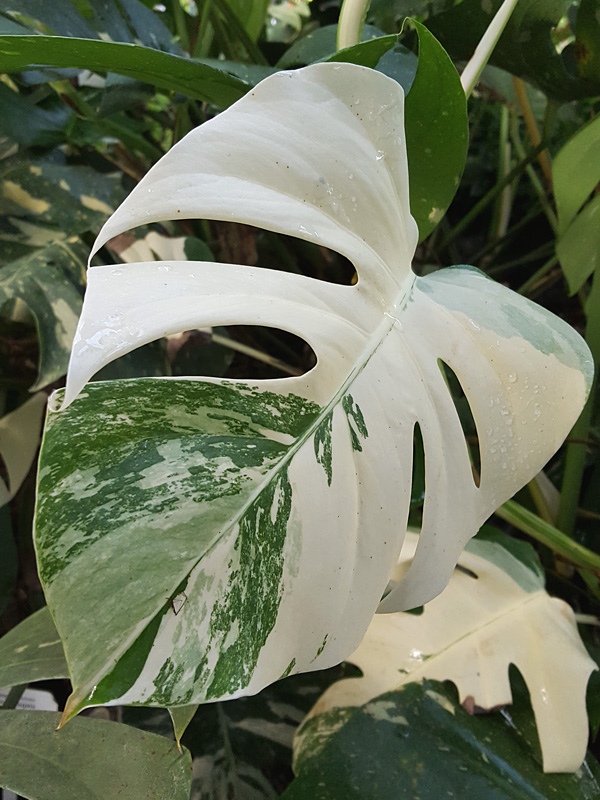
Monstera Deliciosa Variegata
Variegated Monstera is a vine or climbing plant. You should train it to climb a moss pole or trellis, enhancing its growth and aesthetics. Use soft ties or twine to gently secure the stems to the support structure. How to Propagate Variegated Monstera Plants. Select a healthy stem: Look for a stem on your variegated Monstera plant with at least.

Monstera deliciosa variegata Variegated Swiss Cheese Plant Indoor Foliage Plants House
For your variegated Monstera deliciosa, find the brightest window you can but keep direct sunlight to a minimum. A couple hours of sunlight (early morning sun or late afternoon sun) is great. Avoid long periods of direct sun though, especially mid-day direct sun, or your variegated leaves can potentially burn and turn brown.

Monstera Deliciosa Variegata
Is the variegated monstera variegata rare? There are a few different variegated varieties, of which the Monstera Deliciosa 'Albo-Variegata' is the most striking one. But they are very rare and quite expensive. Beginning of 2020 a Swiss cheese plant sparked an online bidding war as a botanist spends thousands on it.
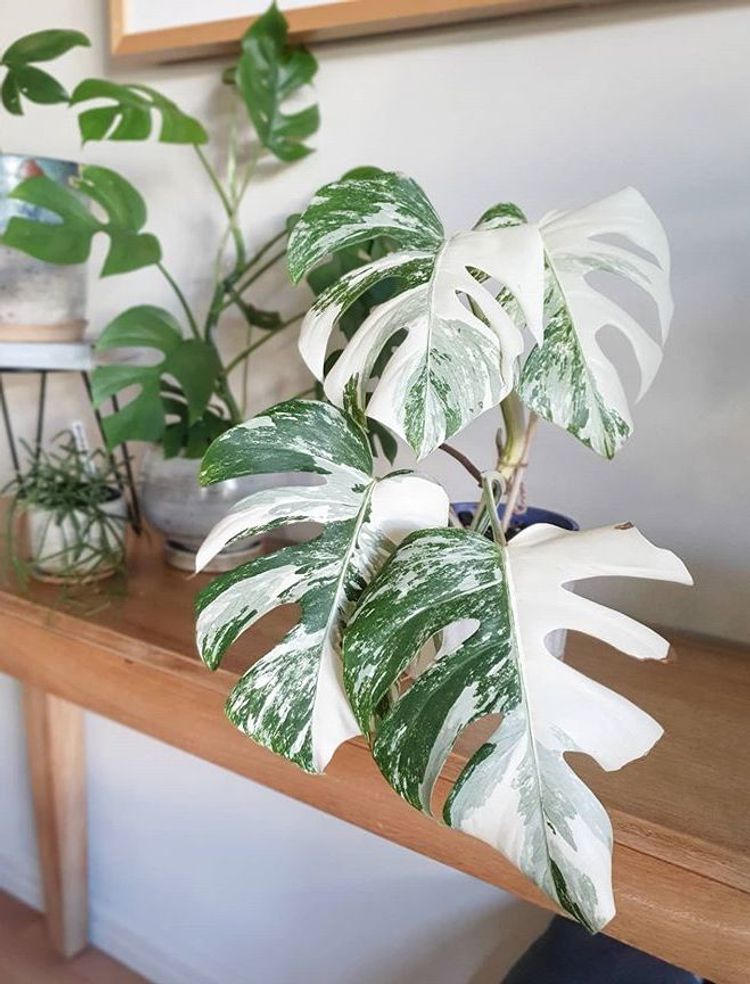
Monstera Deliciosa Variegata care, images and videos ChooseYourPlant
Monstera variegata, also known as the "Variegated Monstera deliciosa," or "split-leaf philodendron," is a rare and highly sought-after tropical climbing vine.It is known for its distinct variegation patterns, resulting in leaves with both green and white or yellow coloring.
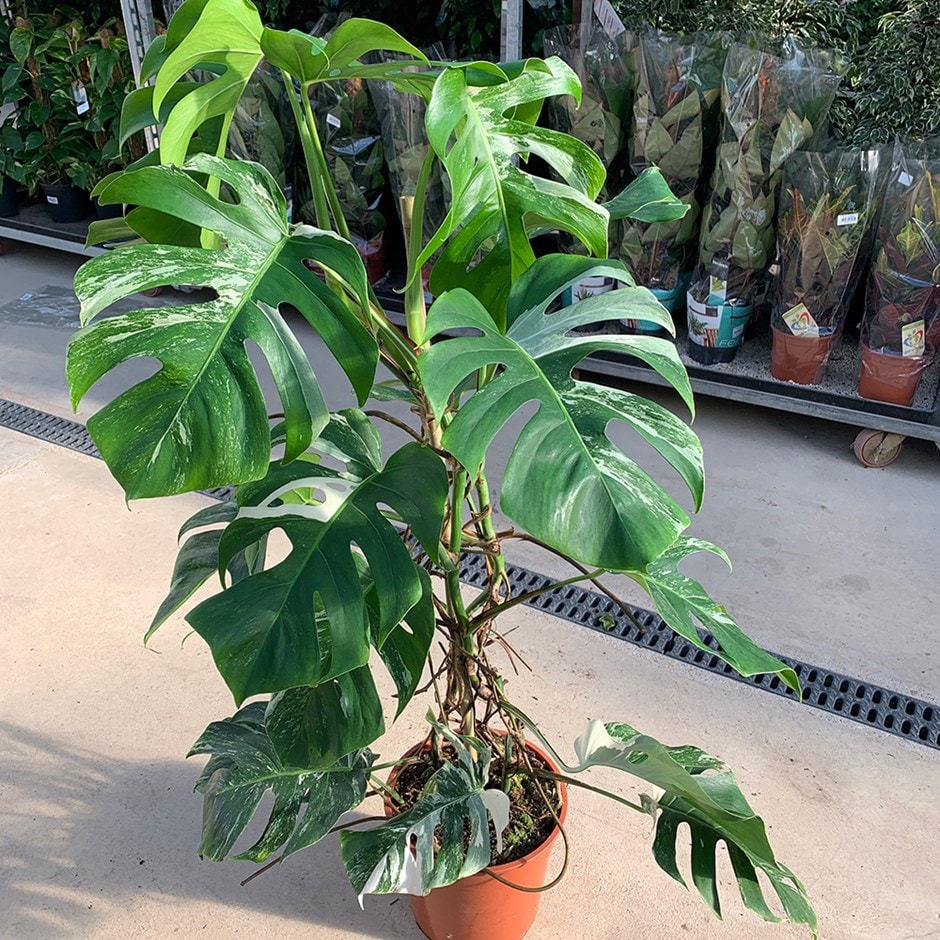
Buy swiss cheese plant Monstera deliciosa Variegata £349.99 Delivery by Crocus
Monstera Variegata or Variegated Monstera Deliciosa is THE trend in the houseplant community. Variegation means that plants have white or sometimes yellow splashes on their leaves and also variegated sections on their stems and petioles - that's the stalk where the leaf is connected to - just to use the botanical correct lingo.
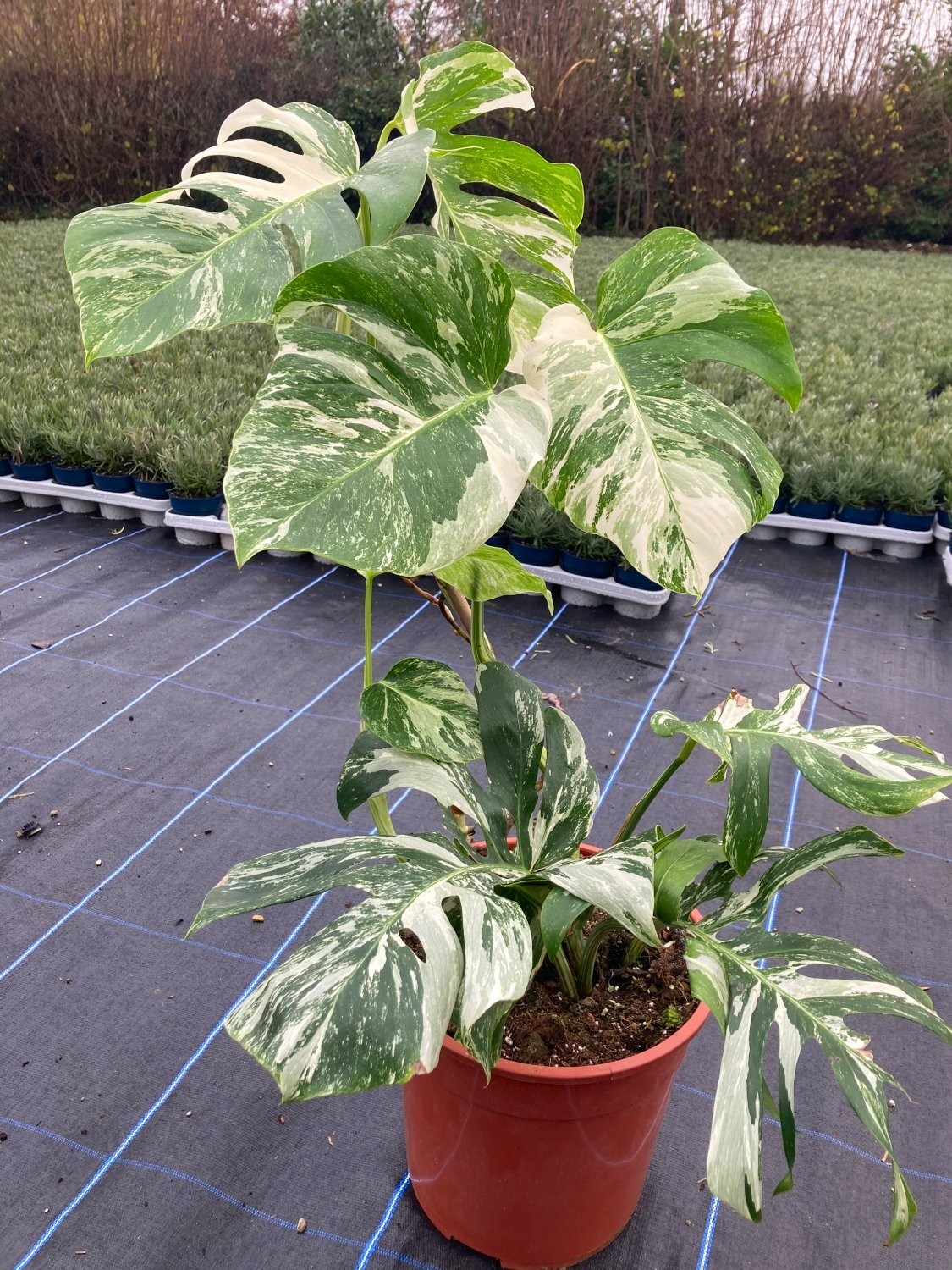
LARGE Monstera deliciosa variegata Variegated Swiss Cheese Plant Large House Plants
The Monstera Deliciosa Variegata Full Moon is a unique species indeed. Named for its almost entirely white leaves (and differing from the half moon Monstera which, as you can probably guess from its name, has half of each leaf white), this plant is harder to care for than most and has the most challenging needs of the variegated varieties. This.

Monstera Deliciosa Variegata
The 'Monstera Albo' variegated plant is the Monstera deliciosa—a huge tropical flowering plant native to Central and South America.The variegated 'Monstera Albo' characteristics are large glossy heart-shaped leaves. The white and green variegated leaves can grow between 10" and 35" (25 - 90 cm) long and up to 30" (75 cm) wide.
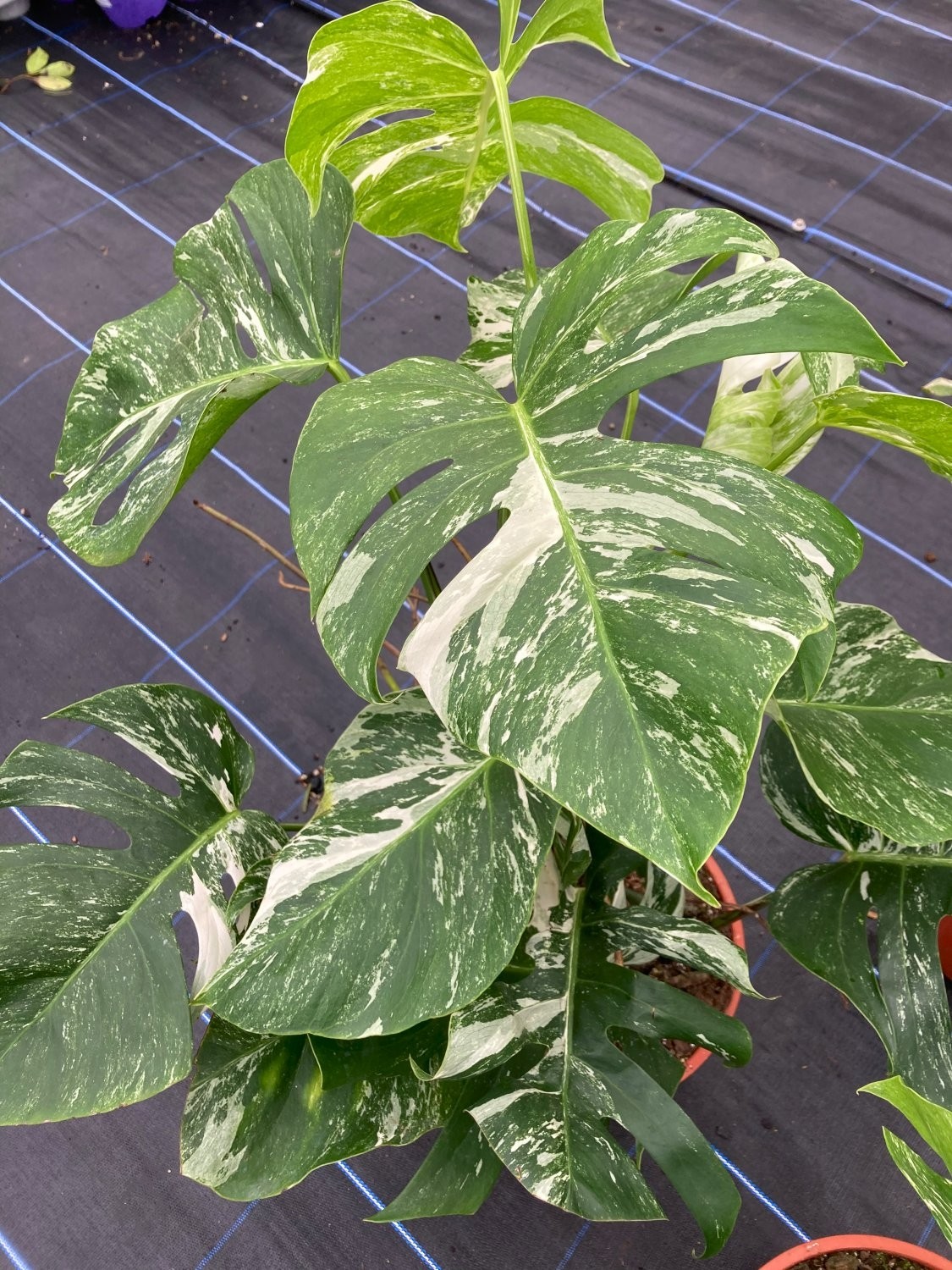
LARGE Monstera deliciosa variegata Variegated Swiss Cheese Plant Large House Plants
The 'Borsigana' is actually a sub-species of Monstera deliciosa. 'Borsigiana' plants are faster growing and have smaller leaves. The 'Albo Borsigiana' is the variegated form of the 'Borsigiana.' The Monstera deliciosa 'Ablo Borsigiana' has leaves that are a bit smaller than other variegated varieties of Monstera deliciosa.
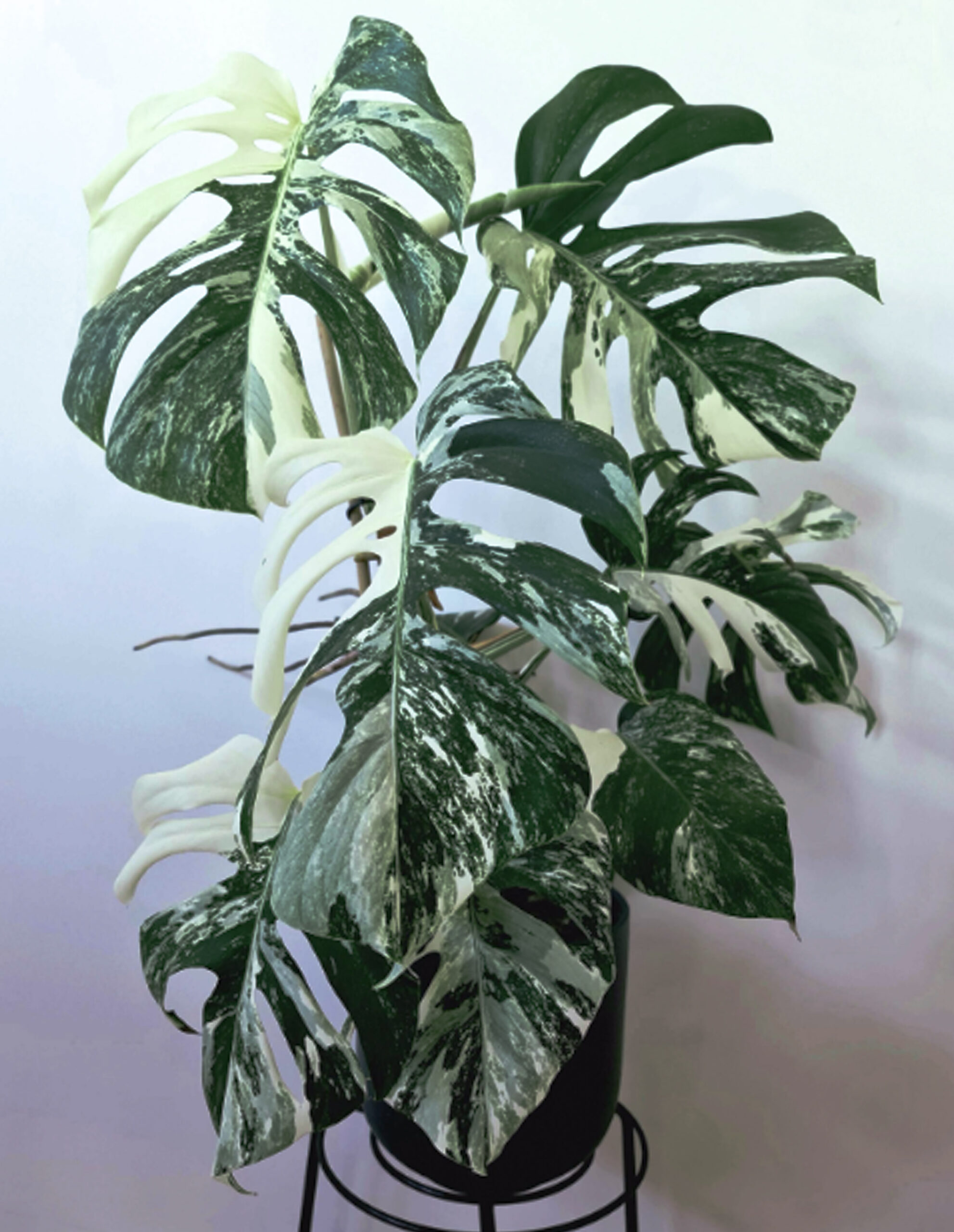
Monstera Deliciosa 'Variegata' Plant World London
Monstera deliciosa 'Thai Constellation' resembles its name with splotchy galaxy-like variegated patterns in the shades of creamy white on dark green foliage. 2. Monstera deliciosa 'Albo Borsigiana'
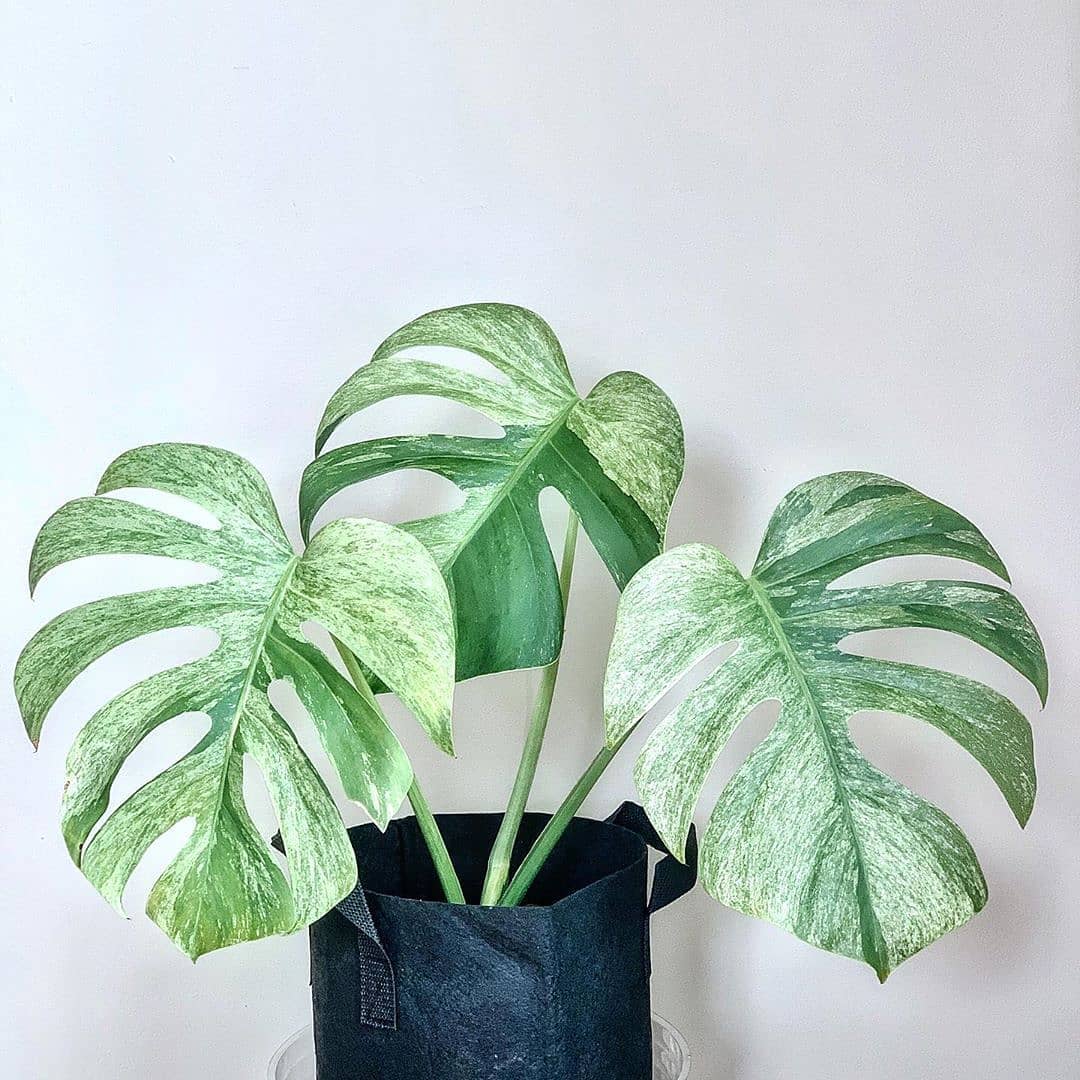
Monstera Deliciosa Mint Variegated A Rare Houseplant You'll Want to Have in 2022 Thursd
Monstera deliciosa, the Swiss cheese plant or split-leaf philodendron is a species of flowering plant native to tropical forests of southern Mexico, south to Panama. It has been introduced to many tropical areas, and has become a mildly invasive species in Hawaii, Seychelles, Ascension Island and the Society Islands.It is very widely grown in temperate zones as a houseplant.

This is one of my Monstera deliciosa variegata. She is starting to recover from her days in the
Monstera deliciosa 'Thai Constellation' Monstera deliciosa 'Thai Constellation' is likely the most popular and widely available type of variegated monstera in the United States.'Thai Constellation' monsteras have splotchy galaxy-like variegation patterns in shades of creamy white and light yellow. Most, if not all, of the leaves will have some type of variegation on them.

Monstera Deliciosa Variegata MONSTERA
In principle, a variegated Monstera is the same plant as its non-variegated counterpart (the Monstera deliciosa most people know and love). It just carries a genetic anomaly, naturally occurring or otherwise, that causes it to produce less chlorophyll in certain parts of its leaves.

Variegated Monstera Deliciosa Care Guide Aroid Wiki
Variegated Monstera deliciosa borsigiana. To be exact we are talking about the Variegated Monstera Deliciosa var. Borsigiana. According to the University of Connecticut, it is a climbing vine that needs a totem or moss pole as a support to grow well as a houseplant.. Borsigiana is a smaller version of the Deliciosa.

Monstera deliciosa variegata Plants, Cool plants, Variegated plants
Monstera albo (Monstera deliciosa 'Albo Borsigiana') is a rare and elusive plant that many plant collectors love and adore.This variegated monstera is at the top of many wish lists around the world thanks to its stunning variegation and prestige reputation—with small plants often selling for several hundred dollars. It is a subspecies of the popular Monstera deliciosa, characterized by large.

True monstera deliciosa albovariegata
Monstera deliciosa 'Variegata' (v) The RHS Award of Garden Merit (AGM) helps gardeners choose the best plants for their garden. RHS Plants for Pollinators plants. This plant will provide nectar and pollen for bees and the many other types of pollinating insects.